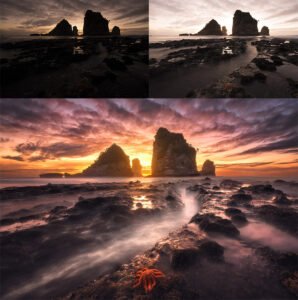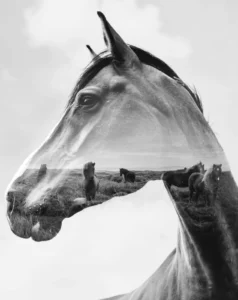In the competitive world of real estate, first impressions are everything. How a property is presented online can make or break a potential sale, and photographs are often the first point of contact for prospective buyers. High-quality images showcasing a property’s best features can significantly increase interest, leading to more inquiries and quicker sales. One of the advanced techniques that can enhance real estate photography is multiple exposure blending. But can this method improve the quality of real estate photos? Let’s explore how multiple exposure blending can be a game-changer for real estate photography.
Understanding Multiple Exposure Blending
Multiple exposure blending is a photographic technique where several images, taken at different exposure levels, are combined to create a single, well-balanced photograph. This technique is particularly useful in situations where there is a high dynamic range (HDR), meaning there is a significant difference between the lightest and darkest parts of a scene.
In real estate photography, this often occurs when shooting interiors with bright windows or exterior shots with a mix of sun and shade. By blending multiple exposures, photographers can capture the full range of light in a scene, ensuring that both the highlights and shadows are properly exposed. This results in images that are more detailed, realistic, and visually appealing.
Enhancing Interior Shots with Multiple Exposure Blending
Interior photography presents a unique set of challenges, particularly when it comes to lighting. Rooms often have a combination of natural and artificial light, creating varying levels of brightness that can be difficult to capture in a single shot. Bright windows, in particular, can cause overexposure, making it challenging to capture the view outside while maintaining the details inside the room.
Multiple exposure blending can solve this problem by allowing photographers to take several shots at different exposure levels—one for the interior, one for the windows, and perhaps another for the midtones. These images are then blended to create a single image where both the interior and the view outside the windows are perfectly exposed. This results in a balanced and detailed photograph that accurately represents the space.
Improving Exterior Shots with Multiple Exposure Blending
Exterior shots are equally important in real estate photography, as they give potential buyers their first impression of the property. However, capturing the perfect exterior shot can be tricky, especially when dealing with varying lighting conditions. For instance, a property might have a sunlit front but shaded sides, or the sky might be too bright, washing out the details of the building.
By using multiple exposure blending, photographers can take several shots at different exposures to ensure that all parts of the building and the surrounding environment are correctly exposed. This technique is particularly effective in capturing the details of the property while maintaining the natural look of the sky and landscape. The final blended image will have balanced lighting, rich colors, and a natural, inviting look that can attract more potential buyers.
The Benefits of Multiple Exposure Blending in Real Estate Photography
- Captures More Detail: One of the most significant advantages of multiple exposure blending is the ability to capture more detail in both the highlights and shadows. This is crucial in real estate photography, where details matter. Whether it’s the texture of the flooring, the view from the windows, or the architectural details of the building, multiple exposure blending ensures that nothing is lost.
- Creates More Realistic Images: While some editing techniques can make photos look over-processed or unnatural, multiple exposure blending creates images that are true to life. This realism is important in real estate, where potential buyers want to see an accurate representation of the property.
- Improves Lighting Balance: In real estate photography, poor lighting can make even the most beautiful property look unappealing. Multiple exposure blending helps to balance lighting throughout the image, ensuring that both bright and dark areas are properly exposed. This results in a more visually pleasing photo that accurately reflects the property’s features.
- Enhances Marketability: High-quality images that showcase a property in its best light can significantly enhance its marketability. Multiple exposure blending allows photographers to produce images that stand out, making the property more appealing to potential buyers.
How to Implement Multiple Exposure Blending in Real Estate Photography
For photographers looking to implement multiple exposure blending in their real estate photography, the process involves a few key steps:
- Use a Tripod: To ensure that all the images align perfectly, it’s essential to use a tripod when taking multiple exposures. This will prevent any movement between shots, making the blending process smoother.
- Bracket Your Exposures: Take multiple shots at different exposure levels, ensuring that you capture the full range of light in the scene. Typically, three to five exposures are sufficient, but this can vary depending on the lighting conditions.
- Blend the Images in Post-Processing: Use photo editing software like Adobe Photoshop or Lightroom to blend the exposures. These programs have tools specifically designed for HDR and exposure blending, making the process straightforward.
- Fine-Tune the Final Image: After blending, take time to fine-tune the image. Adjust the contrast, color balance, and sharpness to ensure that the final photo is both realistic and visually appealing.
Conclusion
Multiple exposure blending is a powerful technique that can significantly improve the quality of real estate photography. By capturing a broader range of light and detail, this method produces images that are not only visually stunning but also more accurate representations of the property. For real estate photographers looking to elevate their work, mastering multiple exposure blending can be a valuable skill that sets them apart in a competitive market.




